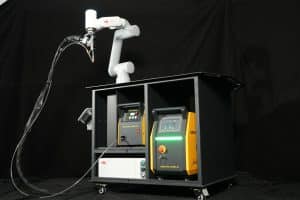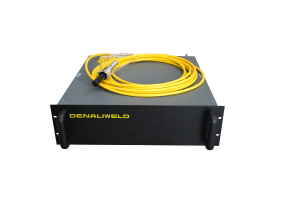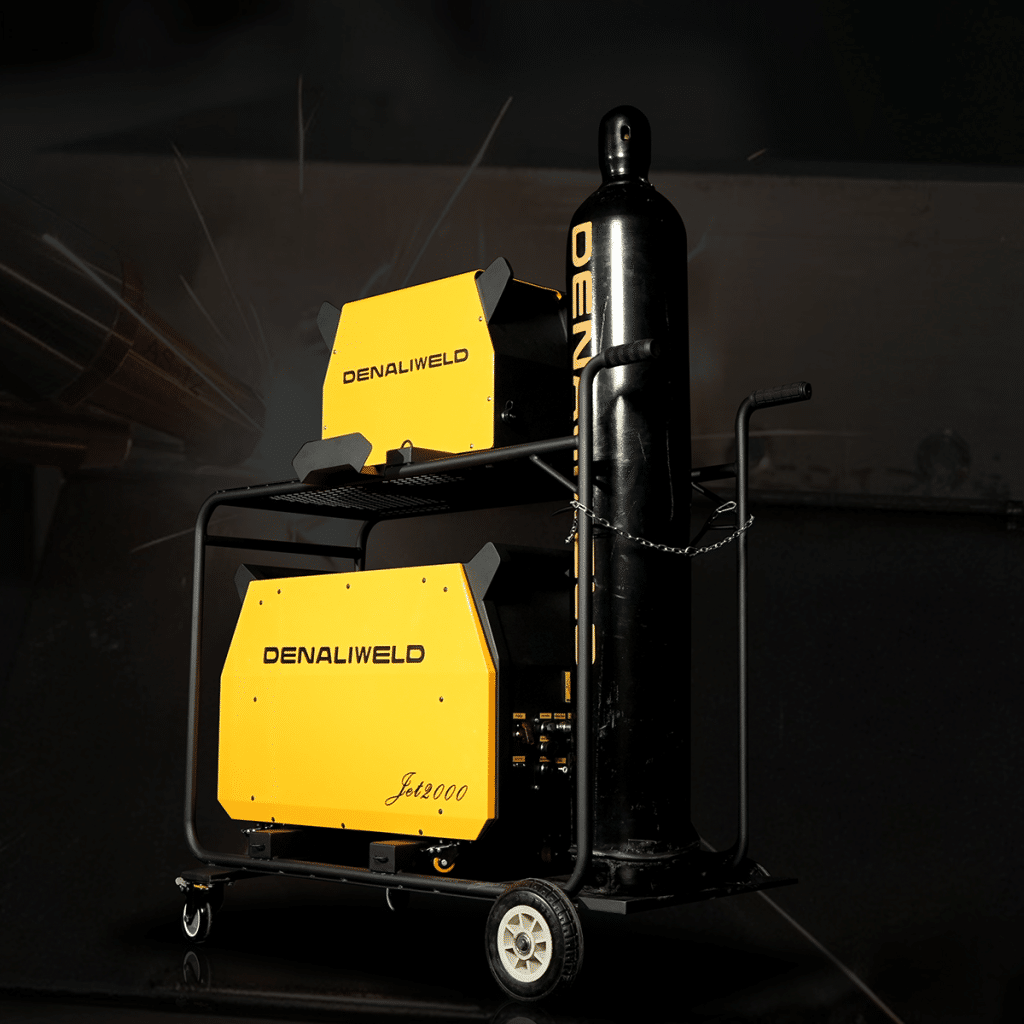The goal of a laser cleaning machine is to irradiate a workpiece’s surface with a high energy density laser beam in order to cause stains, impurities, rust spots, and other substances to instantly evaporate or fall off. Because of its non-contact, non-consumption, high precision, low pollution, and other characteristics, laser cleaning machines are widely used in a variety of fields. Within the field of laser cleaning, fiber lasers, which come in two varieties—continuous lasers (CW) and pulsed laser (MOPA)—are the most stable and flexible light source. Many end-users are unsure of which type of machine to choose; this article outlines the differences between these two types of machines in a clear and concise manner.
Working Principle
The main difference between the working principle of a continuous laser cleaner and that of a pulsed laser cleaner is the difference in laser output.
Continuous laser cleaning machine is through the continuous output of the laser beam for cleaning work, the high-energy laser beam continuously irradiated to the surface of the workpiece, producing thermal and photochemical effects, so that the surface of the dirt evaporation or vaporization, so as to achieve the role of cleaning.
Pulsed laser cleaner is to clean with laser beam output in the form of pulses, the energy of each pulse is high, the instantaneous power is high, but there is a certain interval between the pulses, through the instantaneous irradiation of the high energy of laser pulses, the dirt on the surface of the workpiece will be swollen away from the surface at a very fast speed and become easier to peel off, this process is called instantaneous expansion and easy to dissociate, and at the same time, it will produce the effect of laser striking, which will turn these The laser striking effect will turn this dirt into fragments and be removed.
The parameters of the two lasers are as follows:
| Laser type | MOPA | CW |
| Average power (W) | >200 | >2000 |
| Operating mode | pulse | continuous |
| Wavelength(nm) | 1064 | 1080 |
| Maximum peak power | 60kw | 2000w |
| Maximum single pulse energy | 12mj | / |
| repeat frequency | 1-1000kHz | 10Hz-20kHz |
Both types of lasers are set to the optimal cleaning parameters, the paint on the surface of carbon steel and aluminum alloy two materials were tested for paint removal, the aluminum alloy paint removal laser scanning cleaning twice, the carbon steel paint removal laser scanning cleaning four times.
Pulsed laser cleaner test shows that the same frequency under the short pulse width compared to the long pulse width can be easy to aluminum alloy and carbon steel surface paint layer removal clean, in the same pulse width, the lower the frequency is more likely to cause damage to the substrate, when the frequency is greater than a certain value, the higher the frequency of the paint layer removal effect will be worse. The optimal parameters for pulsed laser cleaning of aluminum alloy surface paint layer are laser power 200 W, pulse width 100 ns, frequency 60 kHz, scanning speed 9600 mm/s; the preferred parameters for cleaning carbon steel surface paint layer are laser power 200 W, pulse width 100 ns, frequency 40 kHz, scanning speed 6400 mm/s; both parameters can remove the paint layer cleanly and there is basically no damage to the sample parts. Both parameters can remove the paint layer cleanly with no damage to the samples.
Tests of the continuous laser cleaner showed that under the same laser power and frequency, the lower the scanning speed, the greater the damage to the substrate. When the scanning speed is greater than a certain value, the faster the scanning speed, the worse the paint layer removal effect. Continuous laser cleaning of aluminum alloy surface paint layer of the best parameters for laser power 200 W, frequency 30 kHz, scanning speed of 2000 mm / s; cleaning of carbon steel surface paint layer of the best parameters for laser power 200 W, frequency 30 kHz, scanning speed of 3400 mm / s; these two parameters can be clean paint layer removal, and the damage to the material is relatively small.
In terms of cleaning efficiency for both materials, the pulsed laser cleaner is much higher than the continuous laser cleaner. The cleaning efficiency of the pulsed laser for aluminum alloy is about 7.7 times that of the continuous laser, and the cleaning efficiency of the pulsed laser for carbon steel is about 3.5 times that of the continuous laser.
The test results show that under the same condition of power, the cleaning efficiency of the pulsed laser cleaner is much higher than that of the continuous laser cleaner, and at the same time, the pulsed laser can better control the heat input and cause less damage to the material surface. Continuous laser cleaners can make up for the difference in efficiency with pulsed laser cleaners through their own high power, but the degree of damage to the material will also become higher in the case of high power.
Comprehensive Comparison
Here we summarize the main differences between the above two types of laser cleaners
Pulsed laser cleaner because of the pulsed nature, so that it works with lower damage to the material; continuous laser cleaner because of the continuous light out of the reason, the energy and heat generated is higher, the damage to the material is greater.
After testing, under the condition of the same power, the cleaning efficiency of the pulsed laser cleaner is much higher than that of the continuous laser cleaner, although the continuous laser cleaner can make up for the efficiency gap by adjusting the power, but the degree of damage to the material in the case of high power will also increase.
Because of the characteristics of the laser, there is a fundamental difference between the two in the application scenarios. Pulsed laser cleaner is suitable for high precision, need to strictly control the temperature of the substrate, the requirement of substrate damage-free application scenarios, such as mold processing, etc.; for some large-scale steel structures, pipelines, etc., due to the large volume of heat dissipation fast, the substrate damage requirements are not high, you can choose continuous laser cleaner.
Pulsed laser cleaning machine because of its technical complexity generally require higher equipment costs, continuous laser cleaning machine is often lower than the price of pulsed laser cleaning machine, DENALI laser welding machine with continuous laser cleaning function, but also produces a separate pulse laser cleaning machine, want to know more about you can leave your contact information, engineers will contact you.
Fields of application and application industries
Continuous laser cleaners are widely used in metal surface descaling, paint removal, building surfaces and other industries that require rapid cleaning of large objects, rough surfaces or large areas of dirt, including automobile manufacturing, automobile repair, ship repair, bridge construction, and building facade rinsing.
Because the pulse laser cleaner has higher cleaning accuracy and control, so it is more suitable for precision parts or requirements of non-destructive material surface cleaning, application industries including electronics manufacturing, semiconductor industry, optical components production, aerospace, cultural relics restoration and so on.
Summarize
In summary, how to choose the right laser cleaning machine, you need to consider the surface characteristics of the industry cleaning object and the requirements of the cleaning effect, combined with the efficiency and cost considerations, choose the most suitable for their own laser cleaning machine.






